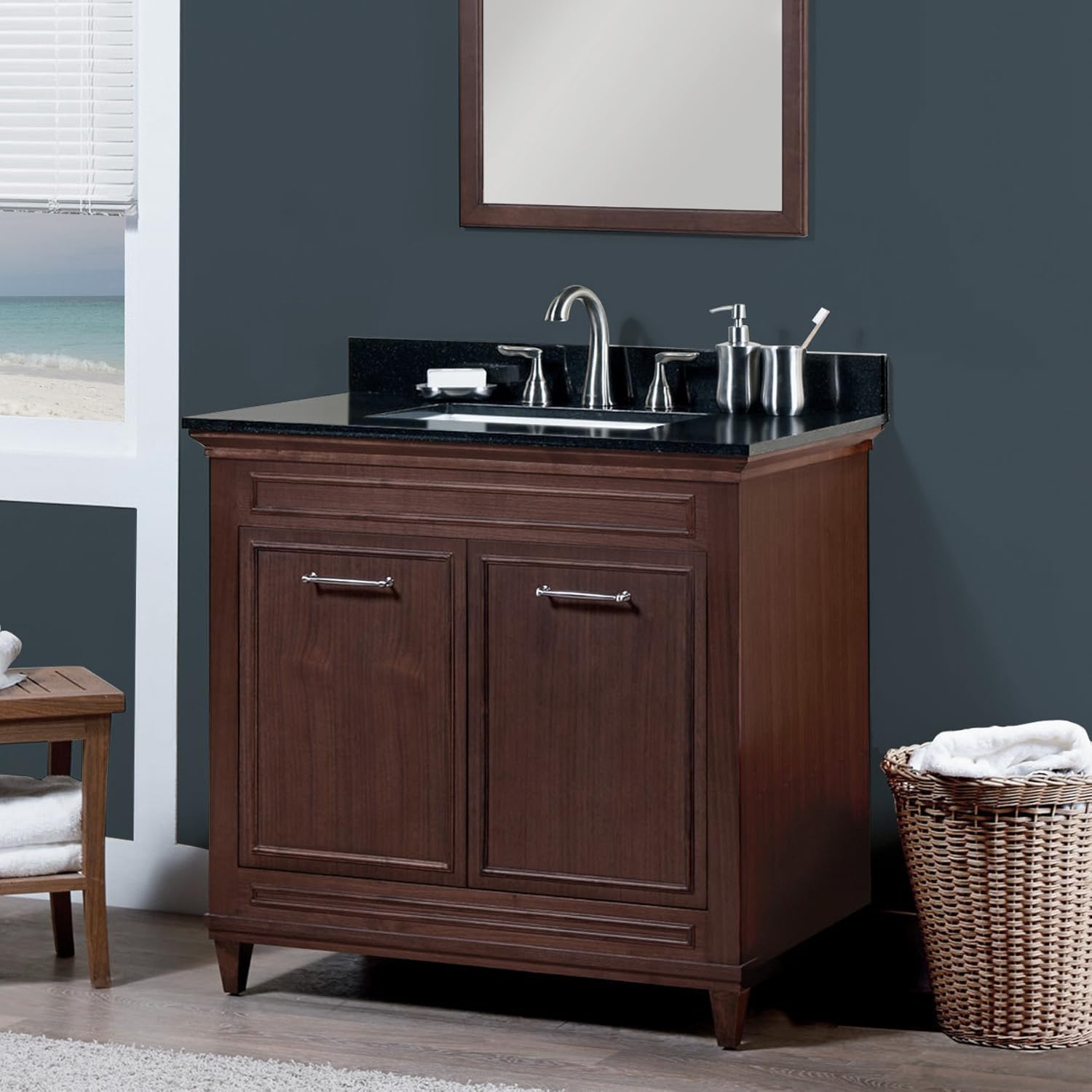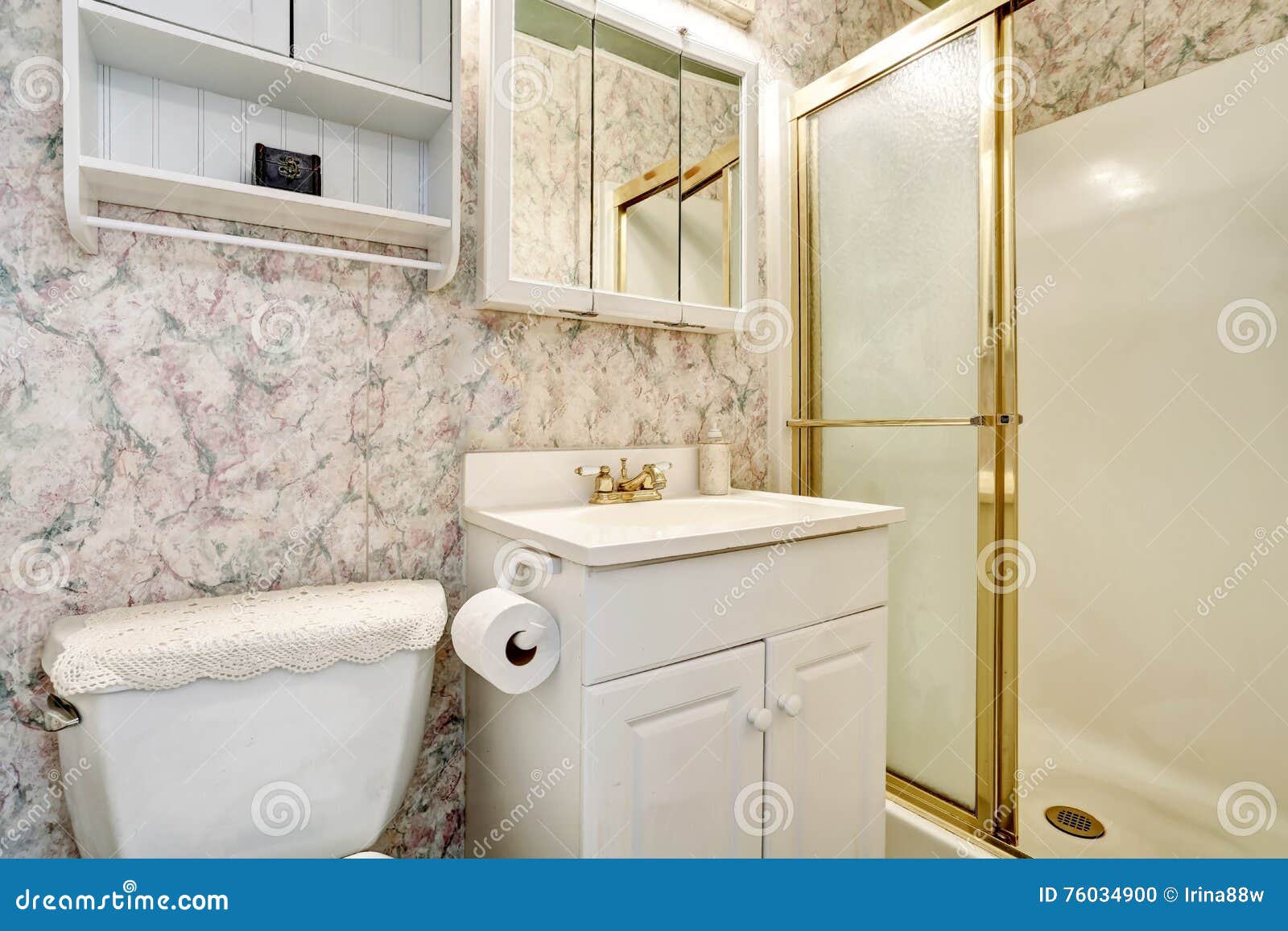The Evolution of American Classic Bathroom Vanities

The American classic bathroom vanity has undergone a fascinating transformation over the past century, reflecting evolving tastes, materials, and design trends. From the simple and functional to the elaborate and luxurious, the bathroom vanity has become a key element in defining the style and character of a home.
Early 20th Century: Simplicity and Functionality
The early 20th century saw the rise of the bathroom as a dedicated space in the home. Bathroom vanities during this era were characterized by their simple and functional design. Often made of wood, they typically featured a single basin, open shelving, and a small mirror. The focus was on practicality, with limited embellishments and a focus on durability.
The Arts and Crafts Movement: A Shift Towards Craftsmanship
The Arts and Crafts movement, which emerged in the late 19th century and continued into the early 20th century, emphasized handcrafted furniture and a return to natural materials. This influence is evident in bathroom vanities of this era, which often incorporated elements such as:
- Solid wood construction
- Hand-carved details
- Simple, geometric shapes
- Natural finishes, such as stain or varnish
These vanities were designed to be both functional and beautiful, reflecting the craftsmanship and artistry of the period.
Mid-Century Modern: Streamlined Elegance
The mid-century modern movement, which gained popularity in the 1950s and 1960s, embraced clean lines, minimalist forms, and innovative materials. Bathroom vanities of this era reflected these principles, often featuring:
- Sleek, geometric shapes
- Integrated storage solutions
- Use of materials such as laminate, chrome, and glass
The vanities were designed to create a sense of spaciousness and modernity, with a focus on functionality and ease of maintenance.
Contemporary Styles: A Fusion of Trends
Contemporary bathroom vanities draw inspiration from a wide range of styles, blending elements of classic design with modern aesthetics. This results in a diverse range of options, from sleek and minimalist to bold and eclectic. Common features include:
- A variety of materials, including wood, stone, metal, and acrylic
- Integrated lighting and storage solutions
- Unique finishes and hardware
- Customization options to suit individual preferences
Contemporary vanities often reflect a focus on sustainability and eco-friendly materials, as well as a desire for personalized spaces.
Materials and Craftsmanship
American classic bathroom vanities are renowned for their enduring quality, which stems from the meticulous selection of materials and the skilled craftsmanship employed in their creation. These vanities are often considered heirloom pieces, passed down through generations, and their timeless appeal lies in the enduring beauty of natural materials and the meticulous attention to detail that defines their construction.
Traditional Materials
The traditional materials used in American classic bathroom vanities are chosen for their durability, beauty, and ability to age gracefully.
- Solid Wood: Solid wood, such as oak, cherry, maple, and walnut, is a mainstay in classic bathroom vanities. These hardwoods are known for their strength, resistance to moisture, and ability to be stained and finished in various ways to create a unique look.
- Marble: Marble, a natural stone known for its elegant veining and durability, is often used for vanity tops and sinks. Its cool, smooth surface adds a touch of luxury and sophistication to the bathroom.
- Brass: Brass, a metal alloy known for its resistance to corrosion and its warm, golden hue, is often used for hardware, such as knobs, pulls, and faucets. Its timeless elegance complements the traditional style of these vanities.
Craftsmanship
The craftsmanship involved in creating American classic bathroom vanities is a testament to the enduring values of quality and attention to detail. Experienced artisans use traditional techniques, such as hand-cut joinery and dovetailing, to create sturdy and aesthetically pleasing vanities.
- Hand-Cut Joinery: Hand-cut joinery, a traditional woodworking technique, involves precisely cutting and fitting pieces of wood together without the use of nails or screws. This method creates strong, durable joints that are less likely to fail over time.
- Dovetailing: Dovetailing, another traditional joinery technique, creates interlocking joints that are incredibly strong and resistant to separation. This technique is often used for drawer boxes, ensuring that they remain sturdy and functional for years to come.
- Hand-Polished Finishes: The finishes applied to American classic bathroom vanities are often hand-polished, creating a smooth, durable surface that enhances the natural beauty of the wood or stone. This meticulous process ensures that the vanity will withstand the rigors of everyday use and maintain its elegant appearance.
Finishes and Treatments
The finishes and treatments applied to American classic bathroom vanities are as diverse as the materials used to create them. These finishes enhance the beauty of the wood or stone, provide protection, and add a unique character to each piece.
- Stains: Stains are used to enhance the natural color and grain of wood, creating a variety of shades and tones. Popular stains include cherry, walnut, and mahogany, each offering a distinct warmth and depth to the wood.
- Polishes: Polishes are applied to wood and stone to create a smooth, durable surface that enhances their natural beauty. Polishes can be matte, satin, or gloss, depending on the desired level of shine.
- Paints: Paints are often used to create a more modern or eclectic look. Classic bathroom vanities are often painted in traditional colors such as white, cream, and gray, but bold colors can also be used to add a pop of personality.
Design Elements and Styles: American Classics Bathroom Vanities

American classic bathroom vanities are renowned for their timeless appeal and enduring elegance, incorporating design elements that seamlessly blend traditional aesthetics with modern functionality. These vanities often feature classic details that evoke a sense of sophistication and refinement, while also offering practical solutions for contemporary lifestyles.
Common Design Elements
American classic bathroom vanities are characterized by a variety of design elements that contribute to their distinctive style. These elements are carefully chosen to create a harmonious and visually appealing ensemble.
- Pedestal Sinks: Pedestal sinks are a quintessential feature of American classic bathroom vanities. They are known for their graceful, freestanding design, which adds a touch of elegance to any bathroom. Pedestal sinks typically consist of a bowl mounted on a single, slender pedestal, creating a sense of openness and airiness in the space.
- Double Vanities: Double vanities are a practical and stylish choice for larger bathrooms, offering ample storage and counter space for two people. They often feature two separate sinks, cabinets, and drawers, allowing for efficient organization and easy access to personal belongings.
- Integrated Mirrors: Integrated mirrors are often incorporated into American classic bathroom vanities to create a cohesive and streamlined look. These mirrors are typically mounted directly above the sink or vanity top, eliminating the need for separate mirror frames and creating a more unified aesthetic.
- Ornate Hardware: American classic bathroom vanities often feature ornate hardware, such as knobs, pulls, and hinges, that add a touch of sophistication and detail. These hardware pieces are typically made of materials like brass, bronze, or nickel, and often feature intricate designs that complement the overall style of the vanity.
- Carved Details: Carved details are another common feature of American classic bathroom vanities, adding a touch of artistry and craftsmanship to the design. These details can be found on the vanity doors, drawers, or even the legs, creating a sense of visual interest and texture.
Styles within American Classic, American classics bathroom vanities
The American classic category encompasses a range of styles, each with its own unique characteristics and appeal. These styles cater to diverse tastes and preferences, allowing homeowners to create a bathroom that reflects their individual personality and design aesthetic.
- Traditional: Traditional American classic bathroom vanities are characterized by their elegant and timeless designs. They often feature intricate carvings, ornate hardware, and rich wood finishes, evoking a sense of history and sophistication.
- Farmhouse: Farmhouse American classic bathroom vanities embrace a rustic and charming aesthetic. They typically feature distressed wood finishes, simple hardware, and open shelving, creating a warm and inviting atmosphere.
- Transitional: Transitional American classic bathroom vanities bridge the gap between traditional and modern styles. They often feature clean lines, simple hardware, and neutral colors, creating a sophisticated and versatile look that complements a variety of bathroom designs.
Table of American Classic Bathroom Vanities
This table showcases various American classic bathroom vanities, highlighting their features, materials, and styles.
| Vanity | Features | Materials | Style |
|---|---|---|---|
| The Hampton Vanity | Double vanity, pedestal sinks, integrated mirrors, ornate hardware, carved details | Cherry wood, brass hardware | Traditional |
| The Farmhouse Vanity | Single vanity, open shelving, distressed wood finish, simple hardware | Reclaimed wood, iron hardware | Farmhouse |
| The Modern Classic Vanity | Single vanity, clean lines, integrated mirror, brushed nickel hardware | Walnut wood, brushed nickel hardware | Transitional |

